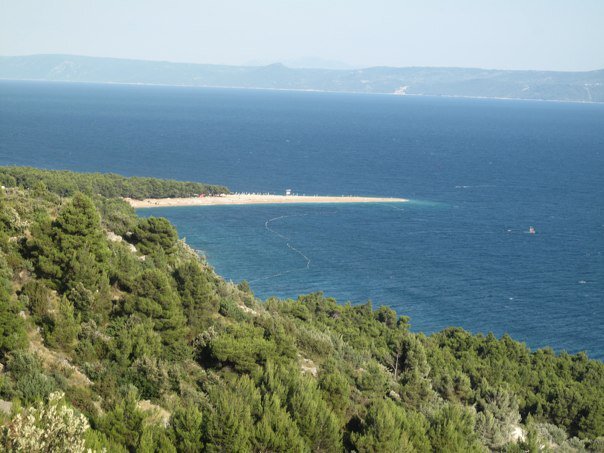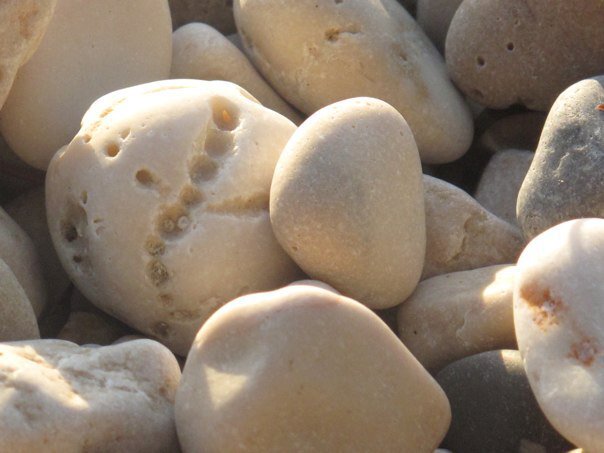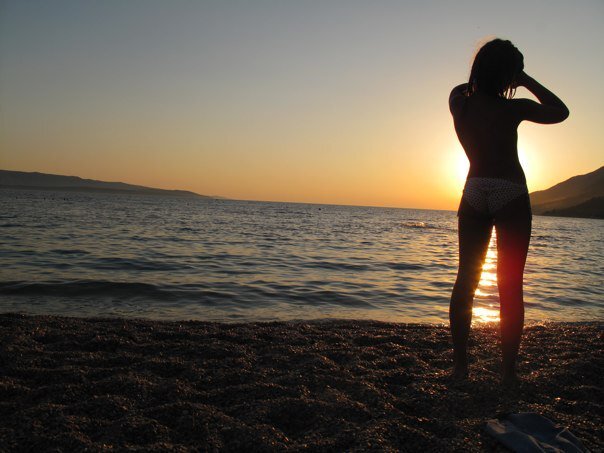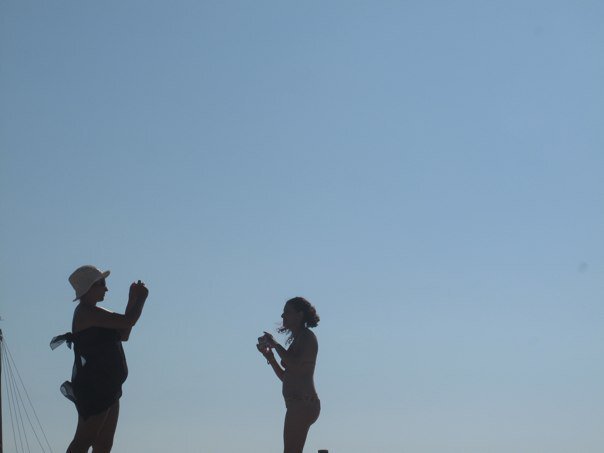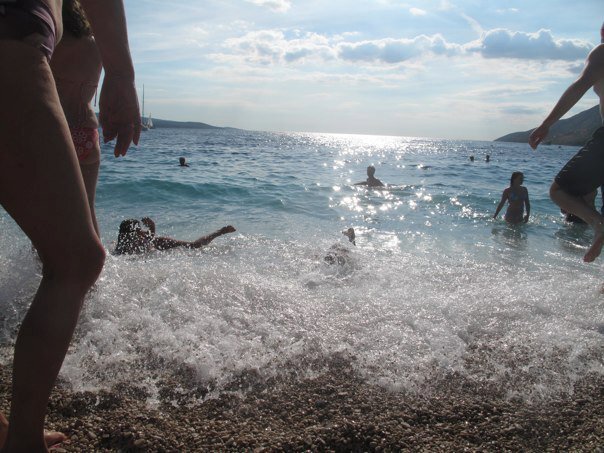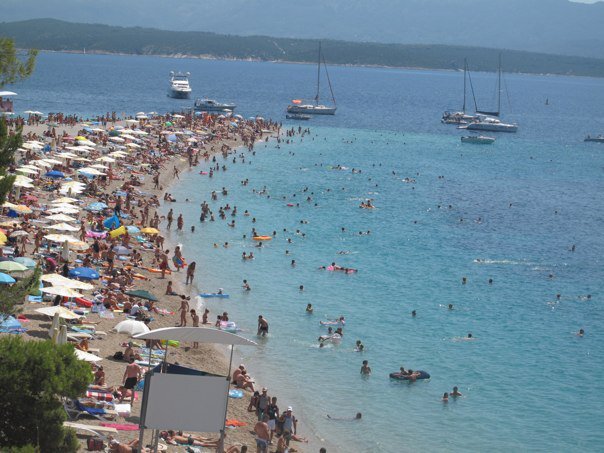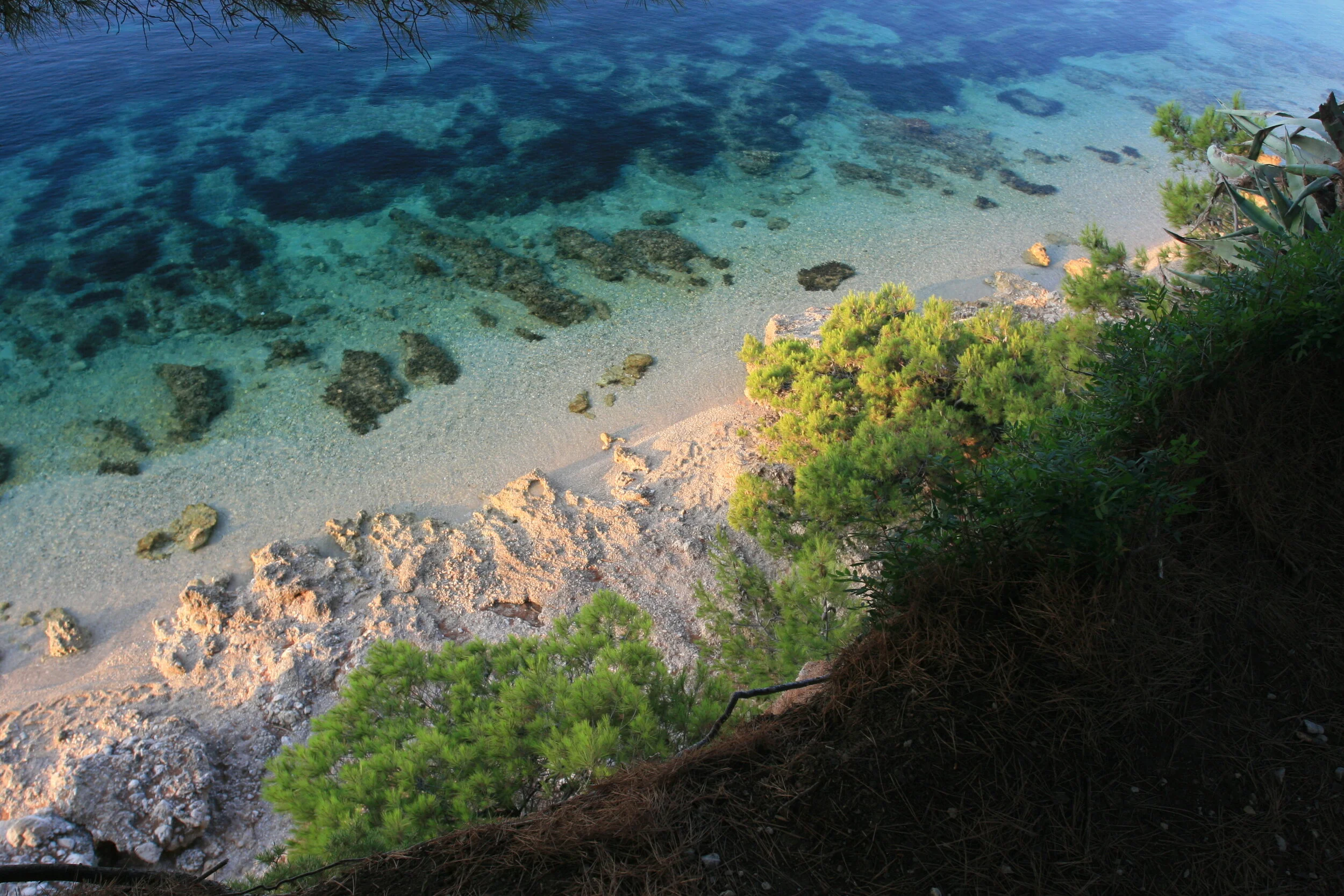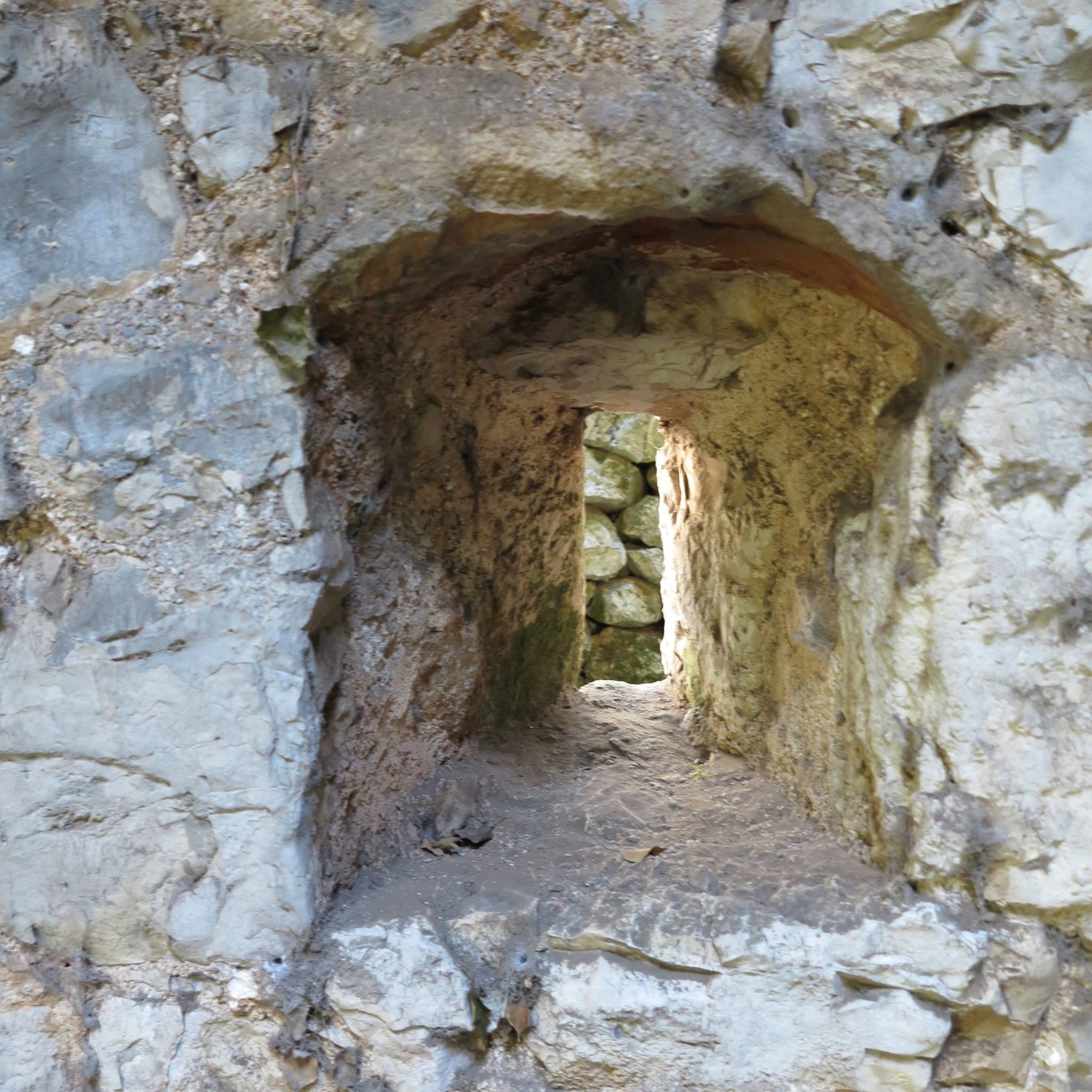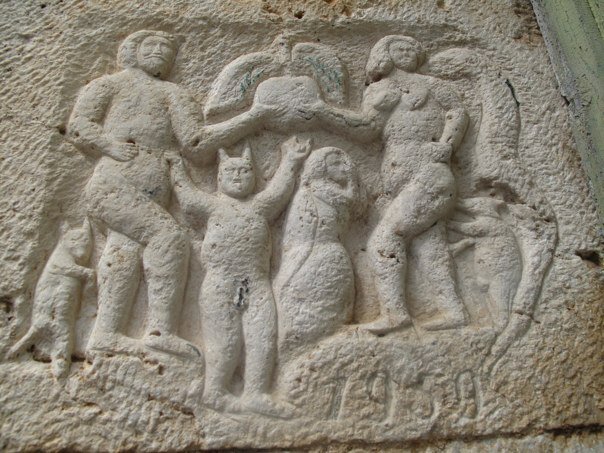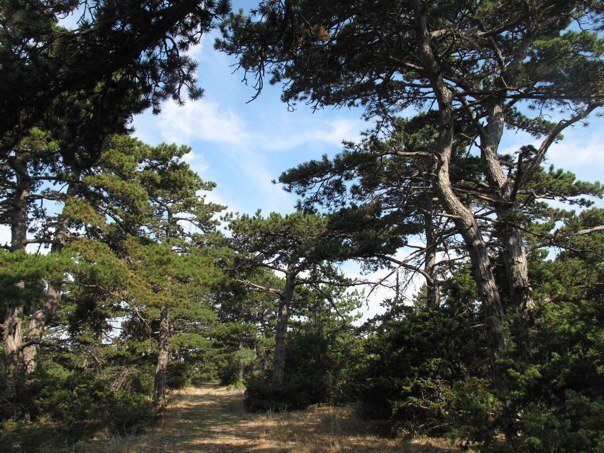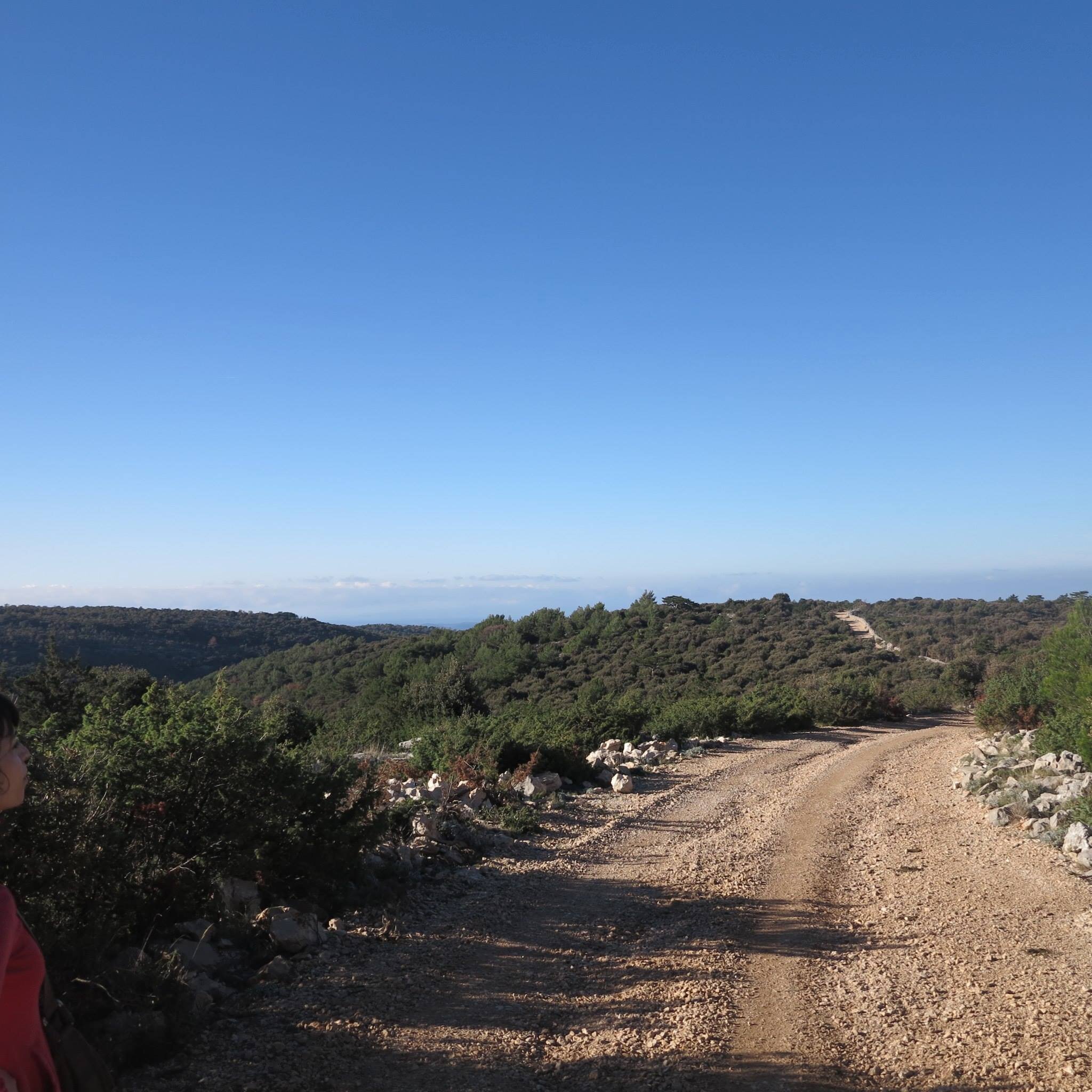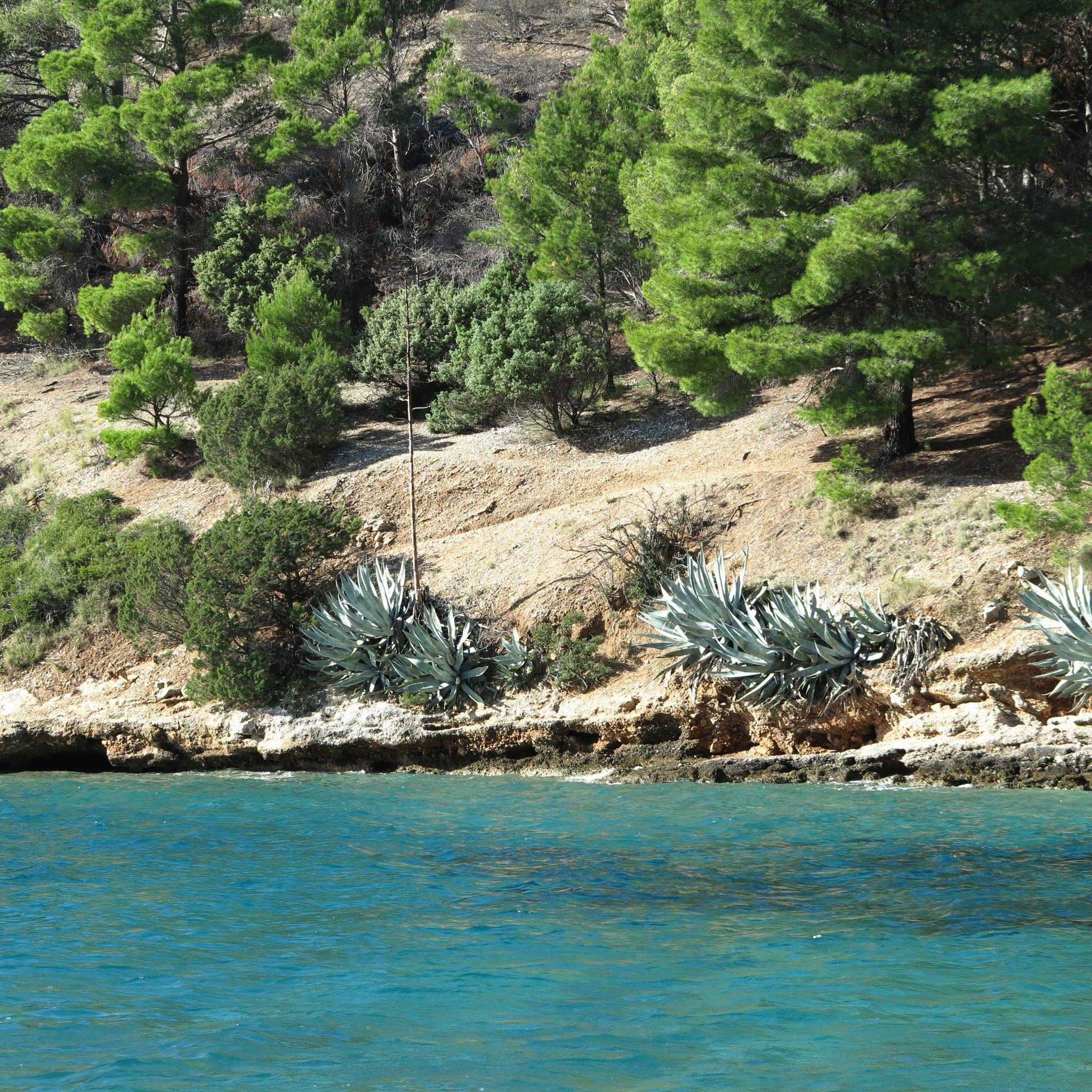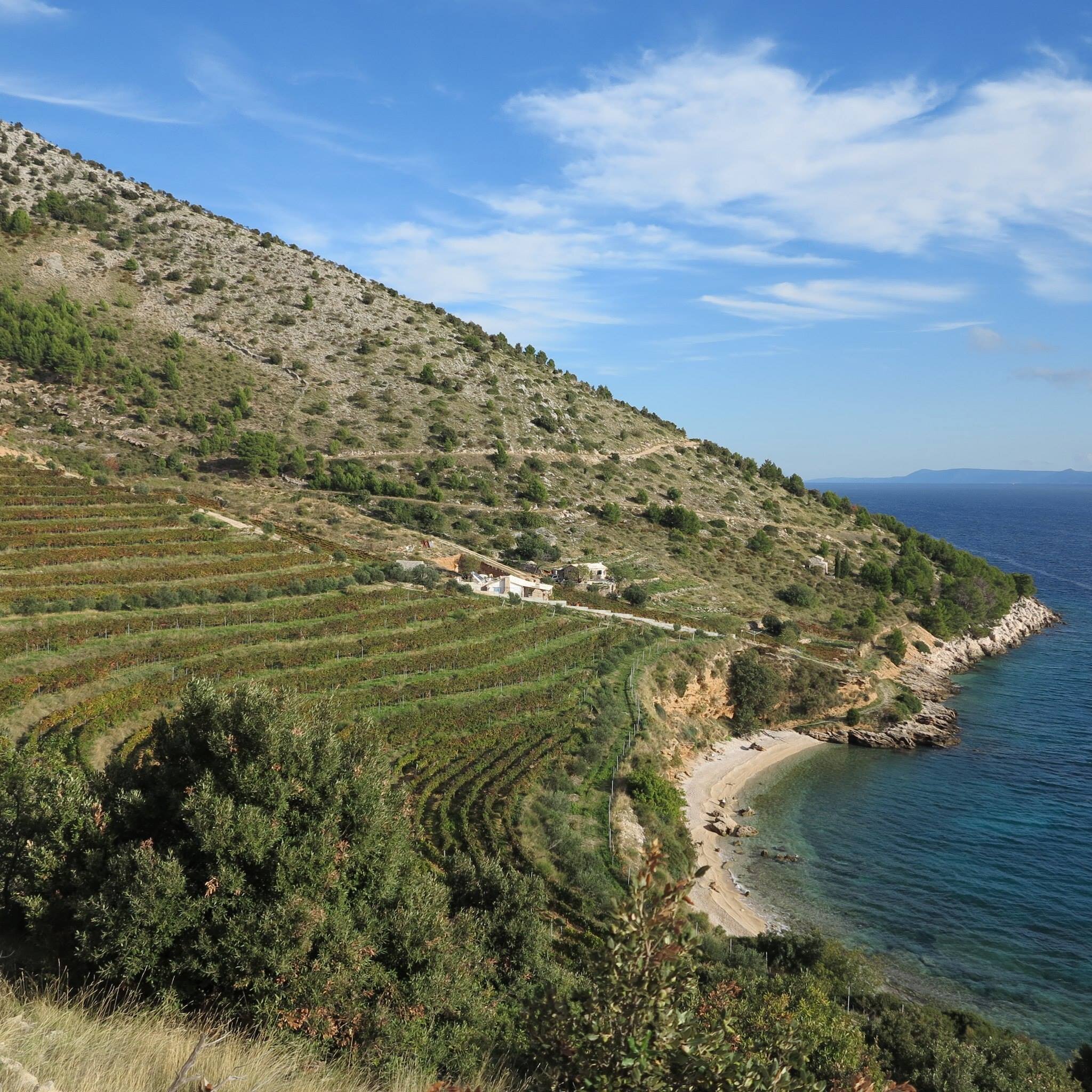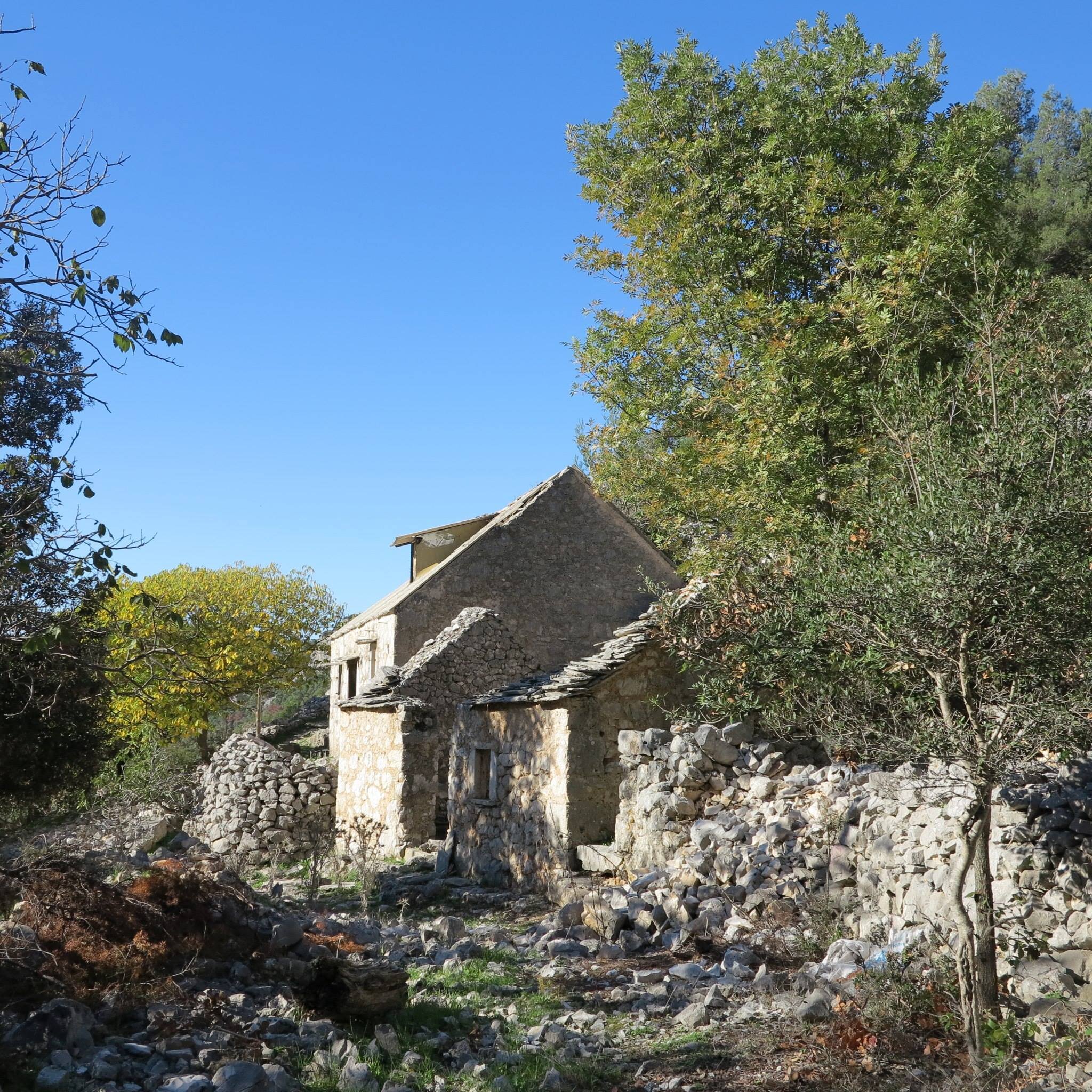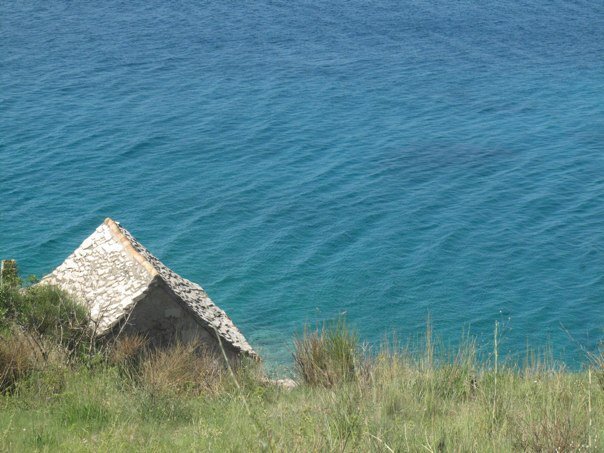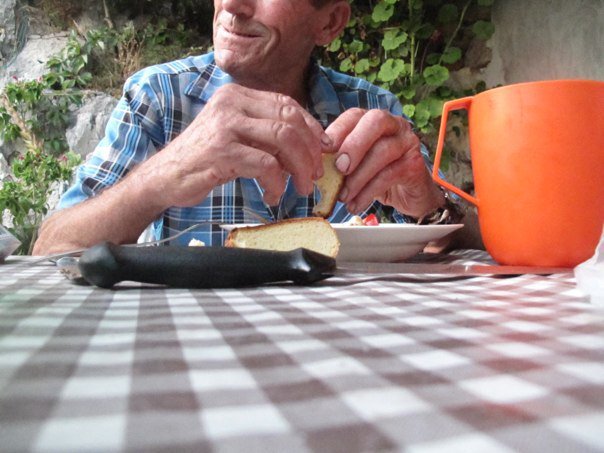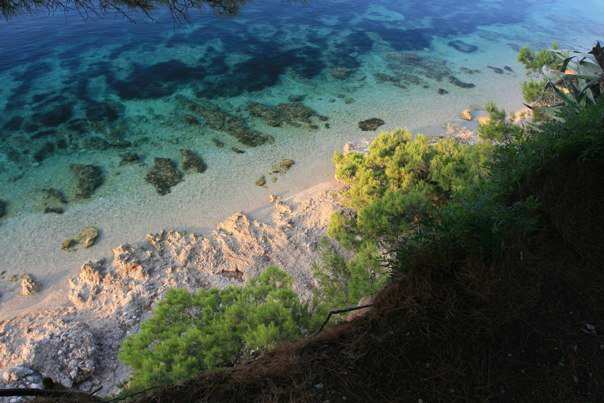“I had been walking for hours through the trees above the sea, not seeing a soul, and the sea being rough was empty of boats and then suddenly I had a kind of flash of vivid perception of the marvellous,the poetic. A tissue of the legendary, the enchanted forest, the spirits of the places, nymphs in groves, partly French, partly medieval, partly Greek and classical, partly my own dreamworld.”
Brač island - rugged and vast, is an island of intense affecting, and ethereal beauty. The show stealing beach, Zlatni Rat (Golden Horn), gets most of the attention, but what lies beyond the beach is what keeps Brač at the top of my choices for ideal island escapism.
To really soak up some authentic Dalmatian magic, strap on some shoes and head out to the wilder side.
If you are familiar with my page, you can pretty quickly get a gist of what I am passionate about. Brač has remained a favourite since I spent a summer rambling the island’s coastal and mountain trails.
Certainly check out Zlatni Rat for some phenomenal natural wonder - a kilometre long, shape-shifting point of tiny smooth pebbles that juts out at a right angle from the shore to the aquamarine sea. The swimming is superb, matched by some pretty great people watching when the spectacle of day trippers with their mountains of beach gear, windsurfers, kite sailors and the like all convene on the point in one incredible mass as if drawn by a magnetic force.
Beyond the beach, a ragged coast hides idyllic coves and fishing villages in deep bays that sweep up to dramatic valleys of ancient black pine forests, olive grove, and vineyard terraces that climb the slopes to panoramic views.
A vast plateau of windblown brush and red earth, interrupted by deep canyons gives the top of the island a wild west, outback feel. And amongst all this magic, some serious ancient history sits as it has for centuries. Hike, sail, or drive, but take some time on the island, as there are 400 square miles out there waiting for the curious and adventurous to enjoy. This post hiking - centric, but lots of tips for the island at the end of the story.
“Certainly I had never seen so beautiful a landscape; a compound of gloriously blue sky, brilliant sunlight, miles of rock and pine, and the sea. All the elements at such a pitch of purity that I was spellbound.”
You may pass the entire day in solitude. The air heavy with the scent of sun baked pines, and the hypnotic din of the cicadas drowning out all other sounds. Carried along the zig zag turns of the trail, suddenly the sight of a small cove will stop you in your tracks. The impossibly clear, green - blue sea beckoning you to jump in. In the high slopes you may come across wandering shepherds and their flock resting in the shade of ancient black pine forests. Mazes of stone walls and dirt tracks connect inland slate roofed villages with the occasional agro-tourism hamlet to drop in at. Otherwise, it is more likely than not you will not see a soul.
There is a novel I first read in high school, that I would suddenly recall many years later during that summer I spent exploring the uninhabited, wild beauty of Brač island.
The Magus, by John Fowles is a mind bending book full of twists and turns. Set on a fictional Greek island, the plot is loaded with mythology, magic, and psychological games in which the protagonist, Nicholas, has found himself. He spends a good part of his time wandering the island trails, sorting through his existential madness, but often distracted and spellbound by, the mysterious island and people he has stumbled upon.
My treks and mapless forays up, down, and across Brač kept reminding me of Fowles’ descriptions of Mediterranean beauty. Mystical places, both natural and created, and all that I discovered on Brač brought me back to the book again, and again.
“ for those walks in the olive groves, dips in the dark blue sea, and a mystery that reveals something else each time you look at it. ”
One afternoon that summer I descended down a scrambly shepherd’s trail that scratched its way down a deep canyon - and into the garden of a Czech man gardening in the nude. Once he found his shorts, he welcomed me onto his magical terrace that sat high on a breezy bluff. We spent many evenings thereafter looking out over the windblown pines; grilling fish, discussing film, art, and life.
BRAČ HIKING & WALKING
What enchants me about hiking, and exploring the trails in Croatia is that they inevitably lead you into the past, history, and stories.
There is always a story.
Narrow or wide, easy or intense - trails always lead to someplace meaningful. Old routes had a purpose beyond reaching pleasurable viewpoints. Laboriously built and marvels of construction, considering some of the territory they pass through, ancient routes are intact centuries on. Stone by stone was laid, and shared over the centuries by the Romans, the Illyrians, pilgrims, smugglers, shepherds, hikers, animals and hunters. Peaks throughout Croatia are dotted with sacred shrines, fortresses, monasteries, and mountain refuge huts. Paths criss cross through olive grove terraces to abandoned villages. Bunkers, and tunnels - remnants of Yugoslavian history are scattered throughout the hills and islands; while old train routes and stations from the Austro Hungarian Empire run through the mountains and across borders that did not exist when they were constructed, now reinvented as walking and cycling trails.
Brač is no exception when it comes to trails laden with history, and mystery. Two incredible spots on the island reached by a hike have a heavy dose of that magical combo; and plenty of gorgeous scenery along the way.
ZMAJEVA ŠPILJA & PUSTINJE BLACA HERMITAGE
DRAGON’S CAVE & BLACA HERMITAGE
It was solitude and escape 15th century style, that an order of Glagolithic monks sought. Fleeing the advances of the Ottoman army that was ravaging the mainland regions, they set sail and landed on the ragged and uninhabited south side Brač island - their new cloistered home away from home.
It was the topography of hidden bays, and limestone terrain of the island that is punctuated with canyons and caves that sealed the deal for the monks on the run. Sequestering themselves in the wild hills of Brač, they had found the perfect permanent hideout. No better place to seek monastic style solitude than a hard to reach cave.
Glagolithic script
“good, to be kind”
Zmajeva Špilja, (Dragon’s Cave), and Pustinje Blaca Hermitage, are two places that simultaneously embody this curious history of hermetic life, sacred and mystical sites, and the magic of Brač island.
Adding to the allure is that to this day both places are still only reachable by foot, along the same paths forged by the monks centuries ago.
Zmajeva Špilja (Dragon’s cave), set in the steep rise of cliffs above Murvica village is believed to be one of the earlier caves the fleeing monks chose to take refuge in, in the 15th century. It’s namesake is earned from the mystical creatures and symbols carved into the limestone walls of the cave. Most striking of all is the large one-eyed dragon form carved into and taking up one side of the cave. There are circulating debates about the intention and origins of the mysterious imagery - from Christian Pagan references, to Slavic mythology and ancient fertility rites. Is it the Leviathan Dragon from the Book of Revelations or is it Orkmarin the one eyed monster that came from the stories of fairies, witches and wolves?
A mystic temple and monastic residence reached by a steep hike - it is a place that resonates with a mysterious energy.
Murvica, the one-horse, one-konoba village of stone houses clustered on the steep hillsides below this medieval ‘portal’, is in itself special, and the views as you climb to the cave are quintessential displays of Brač beauty at every turn.
NOTE *tour must be booked to enter the cave, as it is now gated and locked, keeping it protected. The tour with Zoran is informative and engaging.
PUSTINJE BLACA - BLACA HERMITAGE
Another duo of Glagolithic monks that followed suit in the exodus from the mainland had bigger plans on their minds for a spot further down the coast. Another cave, yes - located in even more extreme and obscure surroundings deep up a valley. Whether it was named for the toughness of the stony land, or its emptiness, it got the name Pustinje Blaca, from the word desert.
Pustinje Blaca Hermitage, Brac Island
However unforgiving the landscape of rock and cliffs, …and more rock was; they remained and it turned out to be a good starter home to expand upon - for centuries.
“Here there was no money, no problems, no women, no problems!”
From what was surely some back breaking dedication of devout men, the hermitage evolved from a simple monastic cave dwelling to a full fledged monastery that expanded out from the orginal cave site, clinging to the cliff walls. As the colony grew, and they tamed the wild surroundings they were granted permission to build a monastery. And onwards to become a successful and self sufficient community with a school, impressive library, and a printing press. There was a mill, and beehives made from stone, olive groves, and vineyards all from which the monks produced a bounty of honey, oil and wine for trade. They even procured a merchant ship for transport of their goods. Inhabited continuously up until 1964, ‘Blaca’ is included on the list as a UNESCO heritage contender, and operates as a museum.
According to our engaging guide - the last, and final friar to live at Blaca - Nikola Miličević had quite modern sensibilities; and was known to enjoy some finer things in life - like a good cigar, classical music, and was such an accomplished astronomer that he had an enormous telescope brought to the monastery - carried in on foot… That was after having a piano hauled in.
But for the best part of the story… how to reach Pustinje Blaca.
THE WAY IN
Surprise, it is a commitment! You must walk in, either up the valley from the sea or descend from the upper inland roads. Just as the monks and the mules of long ago did…
HINT: Rather than a piano, I recommend a backpack full of picnic goods to enjoy on one of the stone terraces below the monastery. Raise a glass of Brac wine. Dine in awe of where you are, up a deep valley with birds swooping around the limestone cliffs and the remarkable story of the place.
Try to include a tour of the monastery museum (40 kuna). If not to see the interior, but to listen to their success story of off grid life - how self sufficient the monks were in taming this wild frontier land. Our guide explained in all seriousness, “Here there was no money, lots of honey, no problems, no women, no problems!”
HIKE TO BLACA FROM ABOVE
*there are guided hiking tours available, or you forge on your own - but inquire about the hours of the museum, and take supplies. There is no water, hence the name desert…
The route descends from the island’s upper plateau, branching off from the road to the island’s highest peak, Vidova Gora.(which is also a must for incredible views of Zlatni rat beach and Hvar island.)
Take 113 past Nerežišća and you will see two brown signs - one for Vidova Gora and the second for Pustinja Blaca. Take a right, then a couple more rights on a dirt road,following the hand-painted signs until you cannot drive any further and the donkeys greet you asking for treats.
THE HIKE
Look for the sign that says BLACA with the hiking mark of a red and white circle. Follow the red lines, and circles down the easy descent that takes you through an abandoned village and a trail that winds through the canyon.
About 30 minutes, but do remember you must hike back up - bring sufficient water. You just need to drive or taxi to the trailhead and also have a ride out from there.
Do not try to use Google Maps to find the trailhead, the web of roads on Brač, confuses things.
COASTAL WAY TO BLACA
By boat or by foot.
You can either hire a boat available in Bol, or Milna harbours - look for RENT A BOAT sandwich boards, or go with a hired boat & guide. *be careful of strong sea currents around Zlatni Rat!
Follow along the coast to the Blaca bay *you will need a map or app on your phone.
This is a superb way to get a feel for the wildness of the coastline. Imagine the monks on the run arriving to this coast centuries ago.
By foot, start in Bol and head by road to Murvica village, which then turns to a dirt road, near Farska dart down towards the sea, and an old tower kula ruins above the sea you will find the trail, which is a bit tricky. Best to have a map, or app handy. Plan for about 2.5 hours minimum to reach the bay.
Directly behind the bay is the trailhead, and it is about 40 minutes uphill, through a peaceful valley that opens up suddenly to a startling view of the monastery clinging to the side of the steep cliffs.
THE LONG WAY AROUND
BRAC HIGHLANDS - BLACA - BOL
For those that have the time for a full day expedition (and the will to go the full mile) - this route starts from the top of Brač, and ends in the town of Bol, and the beach, Zlatni Rat
Start out early in the day so you have plenty of time. Either drive, or taxi to the trailhead and look for the hiking signs to BLACA.
Enjoy your time at the monastery and a piknik before descending down the valley to the bay.
I recommend waiting for a swim. There are pristine coves along the way.
Look for a small trail on the left *if facing the sea, that climbs up to the pines. This route winds up, down and along the edges of rocky coast and is one of those places full of stop in your tracks beauty.
Farska Bay, Brac island
Hike from Bol to Blaca Hermitage
Eventually after some time amongst steep pine forests and possibly a dip into one of the blue-green coves you are lured into, you will reach Farska beach and bay, a pristine stretch of pebbled shore…and likely a few requisite nudists. No matter, as you will be gawking at the beauty of the beach, and deciding that one of the little stone houses on the cliff is your dream home, as I do every time I pass by there.
This is where you turn up to meet the gravel road that leads you to Murvica village, and a much deserved cold beer stop to congratulate yourself, and onwards to Zlatni Rat beach, and the town of Bol feeling victorious.
NOTE Be sure to have plenty of time, and download a map or purchase the GSS map at the tourist bureau. Due to a forest fire the trail is a bit mysterious in spots. Carry plenty of water, and perhaps a long stick for the tall grass in case of snakes.
I was crazy enough to do this route both ways, Bol to Blaca, and same way back. An epic day, but likely not for everyone. I rolled into Murvica like a dusty old cowgirl, just as the sun was going down - a perfect time for a rewarding cold beer on the little terrace bar, a favourite spot. One of my best days in Croatia, of 12 years - that is saying something.
“ “for those walks in the olive groves, dips in the dark blue sea, and a mystery that reveals something else each time you look at it.” ”
INFO AND TIPS FOR BRAČ ISLAND
FOOD WINE FUN
Brač is a wonderful place to dig into some of Dalmatia’s traditional dishes, wines, and products.
Stina winery - one of my favourite island wines. The large winery and tasting rooms situated on the waterfront in Bol are impressive.
https://www.stina-vino.hr
Senjkovic winery - a fave to seek out for an intimate, traditional, family run inland place, and really tasty wine! Located in Nerezsica, great compliment to a day trip exploring the island. Booking in advance. https://www.vina-senjkovic.hr/
Brač olive oil is quite superior, and if you can - get your hands on some of this liquid gold. There is an olive oil museum in Skrip. One of the oldest Dalmatian settlements. https://www.muzejuja.com/
Near Supetar there is a pretty walk through the olive groves. The Olive Path is 6 km.
Brač is a great place to try Peka, the rustic slow roasted meat and potatoes (or octopus) dish of Dalmatia. Konoba Tomic, Konoba Raj are two notables but many places serve it - necessary to order in advance.
Restaurant Cicchio near Murvica is a fave for its out of the way, relaxed ambience of the outdoor terrace.
How to reach Brač island
Brač island can be reached by car ferry via Split, or Makarska. Neither of these go to the town of Bol, where the Zlatni Rat beach is. You must bus, or taxi across the island to reach Bol. There are replica galleon ships that run day tours from Makarska to Bol, but you only have a few hours on the island, and expect to be amongst a sea of sunburnt, beer swilling tourists.
https://www.jadrolinija.hr/en/ferry-croatia
In the summer months you can travel direct to Bol via fast catamaran ferries foot traffic only - that run on Split-Hvar-Brac-Korcula-Mljet-Dubrovnik, and back. Or Split - Milna(Brac)-Hvar.
This site is useful https://www.croatiaferries.com/brac-island-ferries.htm
There is also a very small airport. Rumours are that a German airline will be flying direct to Bol airport in 2021, all depending…
There are some island buses, taxis, and car/scooter rental agencies on the island. It is a large island, so if you want to do some exploring a car or scooter is a great plan.
OTHER THINGS TO DO ON BRAČ
Vidova Gora the highest peak of Dalmatian islands has spectacular views of Zlatni Rat beach and Hvar island. Hike or drive up.
Kite - boarding, windsurfing, parasailing, mountain biking, diving, kayaking - Brač is the island for lots of activity on sea or land to keep the adrenaline junkie busy.
Explore the military tunnels on the coast - Yugoslavian history leftovers - boat tours available.
Graffiti na Gradele - In August there is the street art/graffiti festival, as part of the summer festival on the outskirts of Bol. You can check out some of the permanent art adorning the facades of an abandoned hotel if you can’t make the festival.
One unique experience I was lucky enough to be taken on as a surprise is a fly over the island, in a two seater plane with Wings of Brac. Pretty incredible! Contact +385 (0)91 333 2421





